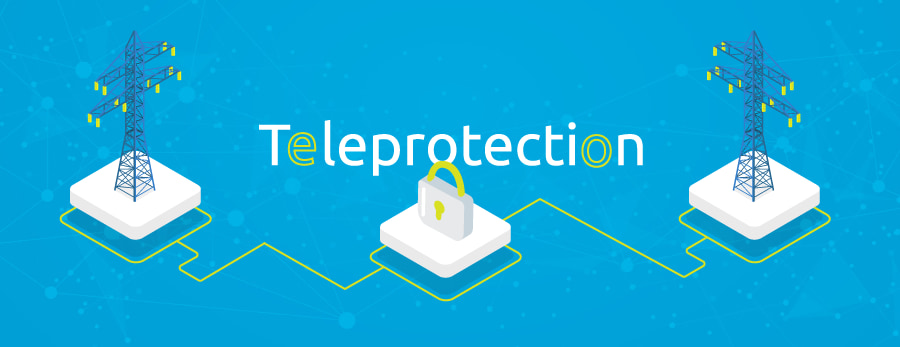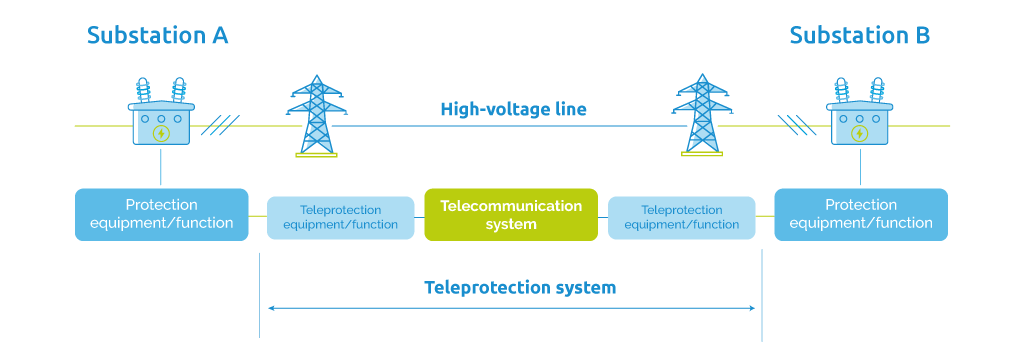02 Sep 2020

Protection systems are a critical part of network management, impacting directly on all areas of Utilities’ business such as: power generation, transmission, distribution, and utilisation.
Teleprotection helps prevent damages to staff’s productivity, reduces outages, protects and ensures the power supply to customers.
We can define teleprotection as an essential part of network management
Currently, there is a real need to change the way Utilities run their business by improving control and protection of the power grid in order to prevent outages in the service, avoiding thus serious reputational, economic and operative threats and risks.
Another thing to keep in mind is that utilities worldwide are facing the challenge of migrating from TDM to packet-based network whilst ensuring a proper protection of the power grid. Teleprotection also important for this, allowing for a better migration planning to future proof networks.
What is teleprotection exactly?
Teleprotection is a protection system in charge of monitoring the condition of the grid, isolating faults and preventing damage to critical parts of the power grid.
Teleprotection is a key technology that allows you to disconnect faulty parts from the rest of the network; this is a necessary and essential operation to keep running the powerline with proper performance.

How does teleprotection work?
Teleprotection performs as a physical interface between the telecommunication infrastructure and the protection relays.
When a fault occurs, the protection system switches on circuit breakers or reclosers to avoid fault rippling through the network. Also, in the event of outage, teleprotection helps restart the power to a part of the grid.
What common faults does teleprotection prevent?
- Natural events
- Physical incidents
- Equipment faults
- Malfunction
Why is teleprotection so important?
There are several main reasons:
- Maintaining continuity in the critical service delivery
- Minimising damages, impacts and costs
- Reducing outage time and avoiding downtimes
- Ensuring service delivery to a customer
For example, if the teleprotection system is not running properly, it is probable to suffer damages to power equipment with the consequent high repairing costs and perhaps long outage times.
Is Utility the unique sector using protection systems?
Often, companies such as Oil&Gas, Telecom, Cybersecurity, Airports and Defence and other critical infrastructures use teleprotection systems in their communications. This, allows them to prevent faults and damages by disconnecting the faulty part from the rest of the network automatically and often remotely.
SCADA vs Network Management System
As we know, SCADA is a powerful tool to show and identify the location of the fault. However, the detailed view of the fault and its description are not displayed by SCADA.
A proper Network Management Software notifies you about the fault (previously categorised by severity), indicates you the location, details, and a complete description of the error.
Among other advantages, NMS provides you:
- Consolidated view and complete visibility through customised and predefined dashboards.
- Visualisation of teleprotection equipment, failed telecommunication channels and directly affected circuits.
- Control of all events appeared in your network through the Event log viewer feature
- Teleprotection equipment and its performance, elements connected and other elements’ statistics
- Customised maps including the representation of the network with a protection system and its elements
- Topology and hierarchical maps
- Advanced graphical reports and charts
If you are interested in further info about our software and how it works managing teleprotection equipment, events, faults, statistics etc. Do not hesitate to apply for a demo!
